Curious what happens when a children’s book editor for a big publishing house decides to write her own book? Looking for a new picture book that’ll have your family chanting “Go, Girls, Go!” with eye-popping illustrations? Interested in knowing what tips an experienced editor would encourage you to consider for your picture book manuscripts? In this interview, we step behind the book with Editor-in-Chief of Doubleday Books for Young Readers (BFYR), Frances Gilbert, and learn how an editor views being an author.
It’s an honor to have Frances Gilbert by for an interview. Many of you have seen her top-notch advice on Twitter @GoGirlsGoBooks and a frequent participant of #PBChat. Frances has been a children’s book editor for 25 years and a children’s book author for two years. She’s the Editor-in-Chief of Doubleday Books for Young Readers, an imprint of Random House Children’s Books, and the author of “Go, Girls, Go!” (Beach Lane/Simon & Schuster), a cars and trucks picture book that puts girls in the driver’s seat.
Frances, it’s exciting to have the opportunity to pick your brain. Thank you for taking the time out of your crazy busy day to share your journey with us and peel pack the publishing curtain. You’ve been in the book business a long time. Books aren’t just a job or passion of yours, they’re part of your life. Before we get into some of your incredible projects (like your soon-to-be-released Go, Girls, Go! book), can you share a little about what drives you (pun intended)? What lies at the center of your motivations to bring books into the world? What keeps you fighting for that next book that you believe deserves to be on the shelf rather than letting someone else take care of it?
I don’t think I ever stopped being four years old. My family emigrated from England that year, and it was a tough time being a shy new kid with a weird accent in a foreign culture. I learned to read that year too, and only felt at home when I was sitting quietly with a book. I still do. I think a part of myself got stuck in that year, so when I consider books I might acquire or stories I want to write, I think about that kid and wonder what she’d like to read.
I wrote my first Step Into Reading leveled reader “I Love Pink!” because of a photo I had of me as a little girl sitting in a pink dress in a room with pink wallpaper and a pink bed. Amazingly, when Eren Unten sent the illustrations in, the little girl looked exactly like me! So then I wrote “I Love My Tutu!” and “I Love My Grandma!”, which comes out next spring. I’m working on my next one, which is about baking. These books are basically my memoir.
And you bring up a good point about “letting someone else take care of it.” That’s exactly how it feels editing a book. It’s your companion for up to two years before it even gets to market, so you have to have a very strong connection. I often reject manuscripts that I think are perfectly fine but not a good fit for my list, because I can’t imagine being the right steward for them. But I know someone else will feel passionately about that text, and it will be all the better for it.
You’ve shared thoughts in other interviews (SCBWI KiteTales, Middle Grade Ninja, and Picture Book Builders to name a few) and on your super informative Twitter feed what gets manuscripts rejected and what you look for in queries. Yet, despite your encouraging words and those from countless others, aspiring creatives are tossed back and forth between hope and discouragement. Are published authors and illustrators born or made? Are there common attributes that you’ve seen in successful authors or illustrators that can be developed over time in those who haven’t received such notable accomplishments?
The bottom line is that you have to be a great storyteller. Some people effortlessly write beautiful, compelling sentences. I’ve worked with Candice Ransom on a number of books and her prose grabs me instantly. In February, I’m publishing her incredible story about Thomas Jefferson’s little-known obsession with prehistoric animals, called “Bones in the White House” (available for pre-order). Each time I read that book, I imagine Candice telling me that story around a campfire, because that’s what it feels like. An evocative, gripping, plot-twisting yarn.
Candice grew up in the south, where storytelling is woven into the culture, and it shows in her work. And yet, Candice also worked incredibly hard on that manuscript. She and I went through countless drafts, and she had been working on it quietly for four years before I even heard about it. So, yes, hard work can make your story stronger:
Working with critique groups, reading great picture books and studying why they’re so effective, being a part of the SCBWI and learning from their workshops. But having an innate gift of storytelling has got to be there too.
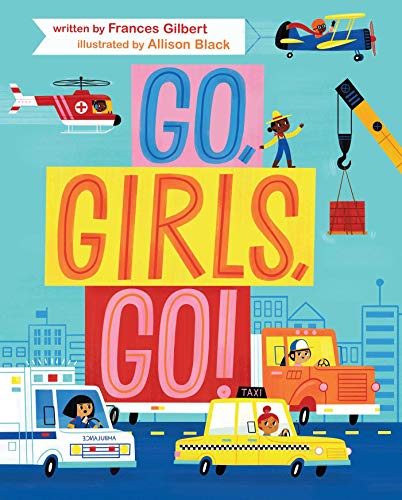
Having reviewed, edited, championed, and helped bring a plethora of books into the world, you’ve also ushered in your own. We are on the verge of seeing your latest, Go, Girls, Go! come out that will follow I Love My Tutu! and I Love Pink!. What’s it like as an editor for others, to be working hard on your own book to submit it for approval and acceptance?
Oh, it’s terrifying! I submitted “Go, Girls, Go!” to a small handful of editors and waited as nervously as if I’d never worked a day in publishing. My so-called query letter was a PowerPoint deck! Ha! I’ve loved the experience working with Andrea Welch on “Go, Girls, Go!” and Heidi Kilgras on my Step Into Reading books. How lucky am I to have such veteran editors? It’s too hard to see your own work critically, so even though I edit all day, my work was vastly improved by these two women. I’m glad to be in their hands.
Recently, my oldest son has begun reading books on his own and a current favorite is Go, Dog, Go! by P.D. Eastmen. It’s a classic romp of adventure with repeating patterns and fun pictures for kids just getting into reading. How did Go, Girls, Go! come to be and how did you consider separating your book from the classic while honoring it’s theme and style? Regarding visual style, how was illustrator Allison Black selected and what has her unique style added to the text?
I actually didn’t think of “Go, Dog, Go!” until you just pointed it out, Rhys! The title is obviously similar, but that’s it. A friend of mine gave me the challenge: What would a cars and trucks book for girls look like? And the phrase “Go, girls, go!” just popped into my mind.
Girls are often expected to be demure. I wanted to write a really rambunctious book with lots of loud sounds for girls to read aloud, and I wanted girls to see themselves in charge. Girls are often left out of books about vehicles. Or if it’s an anthropomorphized vehicle that’s supposed to be female, they’ll add eyelashes to it. That drives me crazy. What does that teach young girls? That they belong in the passenger seat. I feel passionately about changing that.
Allison Black was selected by Andrea and my incredible art director (and friend!) Lauren Rille. I’ve had her work bookmarked for ages, so I freaked out when I found out she’d be illustrating the book. It’s a thousand times more perfect than I could have ever dreamed. Allison’s vibrancy and color and clever use of space absolutely captures the energy of the story. It’s so joyful and powerful and kinetic.
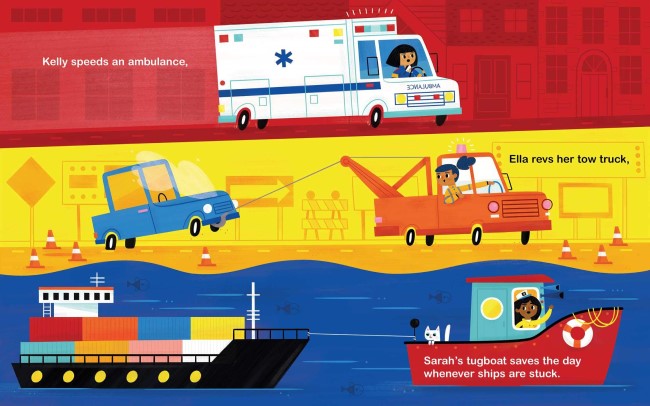
You have unique insight into the release of a book that certainly helps you see the details in what to do for your own books. What have you noticed helps bring exposure to new books in the market? Are there tried and true methods you recommend sticking to or are new and radical methods more of the norm?
The way books are promoted has changed. Publishers used to take out print ads and send authors on tour; now the attention is mostly an online strategy, because people are stuck to their phones. And it’s largely up to the author to make her own waves: Connecting on social media, talking to bloggers, setting up local book visits.
I worked with Tammi Sauer on her first three books many years ago – pre-social media, for sure – and Tammi basically made herself into the rock star of children’s books in Oklahoma, Kansas, and Texas. She did that all herself, with hard work and relentless energy, and launched a hugely successful career. Authors have to roll up their sleeves and get things done.
The #WritingCommunity on Twitter is one of a kind. It showcases the adage that authors are not in competition with each other due to the voracious appetite of readers. It’s been noted that authors are in competition with “other” entertainment, distractions, and work. What have you noticed in today’s generation with the consumption of books (physical, electronic, audiobook, etc.) and how do you see it evolving over time?
When the iPad first came out, people were saying all sort of bombastic things, such as “Print books won’t exist in two years.” None of that came to pass with picture books, thankfully. Parents don’t want the lights of an e-reader to startle their kids’ brains right before bedtime. It’s been gratifying to see beautiful printed children’s books remain. But, yes, our attention spans are so much shorter now, including mine.
I always tell writers to make sure their first line and first page grab me hard. I have a lot of things competing for my attention when I read submissions. If I have to wade too hard through your opening lines, I’m not going to read past the first paragraph. Same goes with customers. When they pick your book up in a store or glance at it online, they want to know instantly why they should buy it.
And I agree with you about the children’s writing community. I’ve been blown away by the support and am happy to give that support back in any way I can, such as by participating in #PBCHAT, #PBPITCH, and #DVPIT.
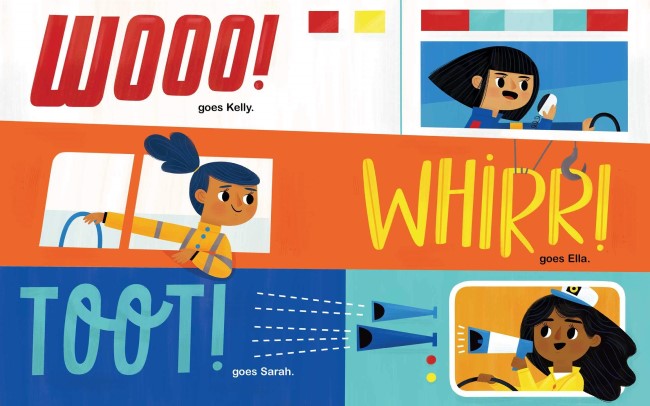
Some books are mostly educational. Some are mostly entertaining. And many are a fun hybrid of the two. What is Go, Girls, Go!? What do you hope readers will take away from this fun, adventuresome read?
Just total fun. “GO, GIRLS, GO!” is a line that’s repeated throughout. I want girls to feel giddy and excited and proud to be a girl. Last year, I went on vacation to Majorca and because I landed unexpectedly late, my only way of getting to my inn was to rent a car at midnight and drive on the deeply insane Spanish roads, the first time I’ve driven in Europe. It was terrifying, but I kept thinking, “Go, girl, GO!” Why should I be put off from traveling by feeling nervous about getting around?
I want girls to know they can be in charge. And I want them to know that one day they could, say, be a pilot or crane operator or dump truck driver without any hesitation about whether it’s an appropriate job for a woman. So, yes, there’s a lesson underneath, but it’s mostly a fun, noisy, anarchic, rallying cry.
The publishing industry is nearly all consuming in the effort and dedication it takes to be successful. With many book projects on your plate, what have you found works in managing your time? Are priorities driven by deadlines or passion?
At work, I’m laser-focused and productive; at home, I have the attention span of a plank. So, scheduling time to write in my spare time never works. As a writer, I’m all id, as Freud would say. All uncoordinated instinct. It’s always a spur-of-the-moment thing, like waking up with an idea, or deciding at 3 a.m. to write something down. I always write a story in one go. Just hammer it out. Then I go back the same day and edit. Then I usually put it away for a year until I remember it’s there. If I like it a year later, I might submit it. Or I might get distracted by a cookie and leave it for another year.
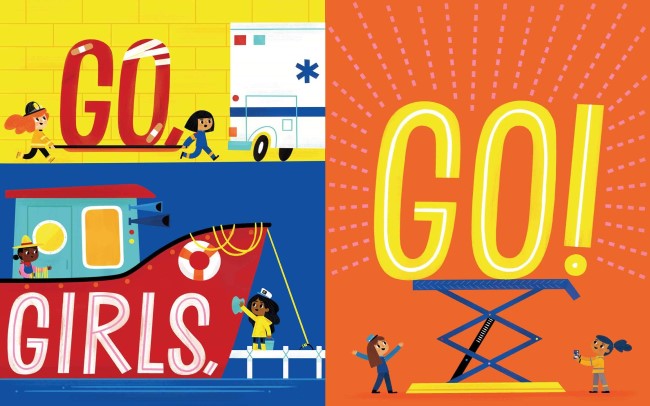
As the world becomes increasingly connected, the lonely life of the writer continues to cling on for dear life. It’s easy to become entranced and isolated in writing, editing, and even marketing with all the technological tools available. What role do more public activities play in successful book projects like writing conferences, critique partners, writing groups, writer associations, marketing events, social media engagement, etc.?
A good piece of advice I got about publicity is doing the type of publicity that works for you. I’m shy, so I’m happier on social media and rattling people’s cages to give my book some attention rather than, say, booking a store visit. Conversely, though, I actually love presenting in front of huge rooms at SCBWI conferences, even though I’m an introvert. My impulse is to isolate myself, but that’s probably not the wisest decision for a writer. Getting out of your own head is super-important. And there are a lot of friendly people out there to connect with.
What’s the future hold for Frances Gilbert besides “more books”? What do you hope to accomplish within the next 1-2 years that we can wait with expectation for? How can people best stay up to date with your work and connect with you?
I have two picture book manuscripts I’m hoping to send out sometime in the next year, and I have a million ideas for more books under the “Go, Girls, Go!” umbrella, which would be my dream. Professionally, I have the best job in the world, and I feel grateful to be so supported in developing picture books at Doubleday. I can’t wait to see what new project is waiting around the corner for me to acquire. And the best way to find me is on Twitter at @GoGirlsGoBooks. I post a fair bit about publishing, writing, editing, and books that empower girls. See you there!
If you enjoyed and appreciated this behind the book interview with Frances Gilbert, would you consider doing these three things?
- Leave a comment and let Frances and I know what you thought or if the interview stirred up any follow up questions.
- Share this interview with your friends on social media using the buttons below.
- Subscribe to my site via email using the email subscription box to the right (or below if you’re on a mobile device). I like my subscribers being first to know when new content is posted before it makes the rounds on social media.
Thank you for reading and as always, happy writing!
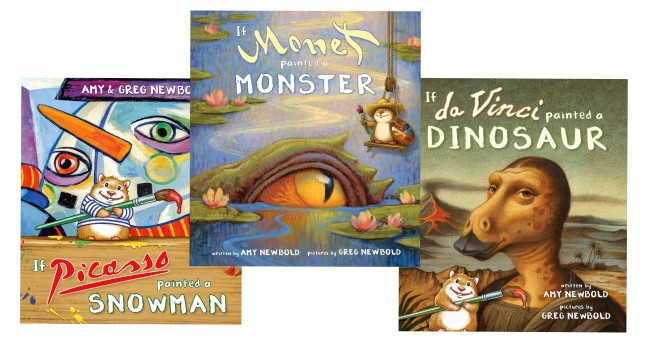
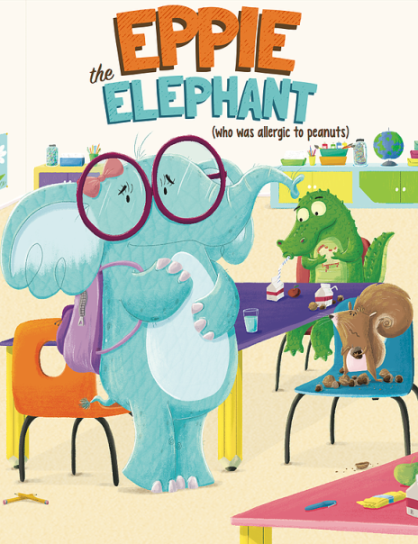
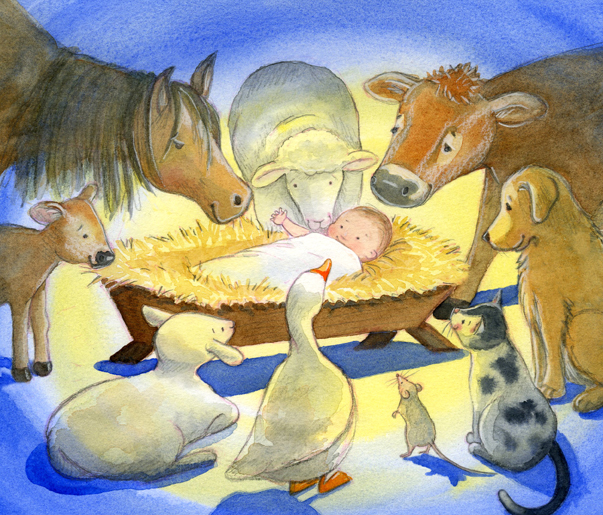
Lynne Russillo
November 26, 2019Great interview. Thank you both!
Rhys Keller
November 26, 2019Thank you, Lynne!
stacey miller
November 8, 2019I loved this interview and can’t wait to purchase a copy of “Go,Girls,Go!” for my daughters because it gives out such a positive message.
Rhys Keller
November 9, 2019Thank you, Stacey!
phyllisharris50
November 5, 2019It is SO fascinating to get a look behind the scenes of how this book came about––especially with a children’s book editor who is also a writer of picture books! I really enjoyed this interview! Congrats to Frances Gilbert on this super FUN book, “Go, Girls, Go!”.
Rhys Keller
November 5, 2019Thank you so much, Phyllis! Frances has so much insight I feel like I have even more questions now than I had earlier! I think another interview must be in our near future…
Joy Wieder
November 5, 2019I just got my copy of Go, Girls, Go! and it is fabulous! The colorful illustrations perfectly compliment the fun and engaging text – with lots of onomatopoeia. I’ve also worked with Frances as an editor and she really helped my book to shine. Congrats to Frances on her book and to Rhys on a great blog post.
Rhys Keller
November 5, 2019Great to hear and thank you for sharing, Joy! Frances really knows her stuff and brings such a wealth of experience to her writing from her experience on the “other side” of the table.